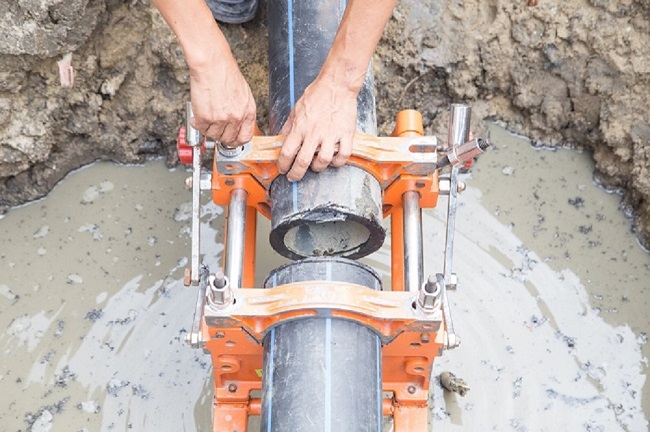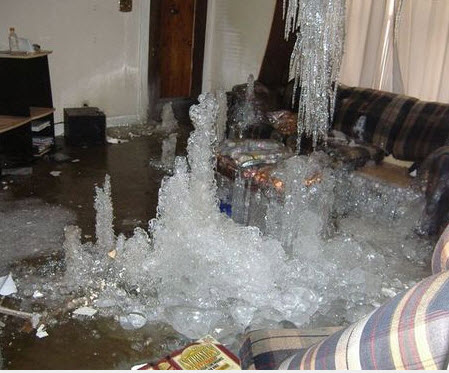What to Quickly Detect and Resolve a Burst Pipe Problem
What to Quickly Detect and Resolve a Burst Pipe Problem
Blog Article
How do you actually feel when it comes to What to Know Before Installing a Dishwasher?

A burst pipe is a significant emergency; you can only stand as you enjoy water you pay dearly to rejoin with the earth. In even worse cases, you see a pool on your kitchen flooring, which is a terrific journey risk, specifically if you have kids around. If the pipeline that burst remained in your walls, trouble: you may need to repaint that whole section.
Just how can a tragedy like a burst pipeline be prevented and handled? Well, by listening to your professional emergency plumbing professionals as well as following these regulations.
Just how do I understand when my pipes have ruptured?
Changing water pressures
Pipelines do not just burst in a day. You might have noticed that your cooking area faucet or shower doesn't run right away when you turn the tap. It may stop briefly for a couple of seconds and then blast you with even more pressure than common.
In other instances, the water might appear normal at first, then drop in stress after a couple of secs.
Damp wall surfaces and also water stains
Before a pipe bursts, it will leakage, a lot of times. If this relentless leaking goes unnoticed, the leakage may graduate into a large wound in your pipe. One easy method to prevent this emergency is to keep an eye out for damp wall surfaces ad water stains. These water stains will lead you right to the leak.
Puddles under pipes as well as sinks
When a pipe bursts, the outflow develops a puddle. It may appear that the puddle is growing in size, and regardless of the number of times you mop the puddle, in a few minutes, there's another one waiting to be cleansed. Frequently, you may not be able to trace the puddle to any noticeable pipelines. This is an indicator to call a specialist plumber.
Untraceable leaking noises
Pipe bursts can happen in the most unpleasant areas, like within concrete, inside wall surfaces, or under sinks. When your home goes silent, you may have the ability to listen to an aggravatingly relentless trickling sound. Even after you've examined your shower head and also kitchen area tap, the dripping might proceed.
Beloved visitor, the dripping might be originating from a pipe inside your walls. There isn't much you can do concerning that, other than tell an expert plumber.
Turn off the Water
When water freezes, it increases in volume by about 9 percent. And also it broadens with remarkable force: The stress inside pipes may go from 40 extra pounds per square inch to 40,000 psi! No pipeline can hold that much pressure, so it bursts. The break may occur where the ice kinds, however more often, it takes place where water stress finds a weak point in the pipeline. That may be inches or perhaps feet from the frozen location. Discover the water shutoff valve and shut off the water to prevent more damages. You might additionally need to shut down the electrical energy as well, relying on where the leaks takes place as well as how large it is.
Contaminated water
Many individuals assume a ruptured pipe is a one-way electrical outlet. Quite the contrary. As water drains of the hole or laceration in your plumbing system, contaminants discover their method.
Your water may be infected from the source, so if you can, examine if your water tank has any type of problems. Nevertheless, if your alcohol consumption water is supplied as well as detoxified by the city government, you should call your plumber promptly if you see or smell anything funny in your water.
What do I do when I detect a ruptured pipeline?
Your water meter will certainly continue to run also while your water wastes. To minimize your losses, find the main controls as well as transform the supply off. The water mains are an above-ground framework beside your building.
How to Fix & Detect a Leaking Pipe
How Do I Know if a Pipe is Leaking?
Leak detection tests can help you determine if your pipe has a leak. Even if you don’t see an apparent leak, you should still conduct leak detection tests regularly to save water and money—and prevent major damage to your home.
Water meter. It can be helpful to figure out what your usual water meter usage numbers are and then monitor them regularly. To monitor your meter, first, turn off all water faucets in your home. Check the meter and write down the numbers. In a few hours, check the meter again. If the numbers have changed, you have a leak. Water gauge. Use a water gauge to test your water pressure. Your showerhead should produce a certain amount of water pressure based on its model and design. If the pressure is lower than it is supposed to be for that specific showerhead, your home likely has a leak. Puddles. Look inside your bathroom, laundry, and kitchen sink cabinets. Puddles around the cabinets or around toilets, tubs, showers, and washing machines indicate the presence of a leaking pipe. You may also notice loose tiles, peeling or flaking paint, or mold caused by water accumulation. Napkin test. Even if you don’t see any puddles, you may still have a leak. You can test for water leaks in the bathroom, laundry, and kitchen by wiping below-sink connections with a napkin, paper towel, or piece of toilet paper. If it becomes damp, you probably have a leaking pipe under the sink. Discolored walls. Walls that are discolored—usually with brown or yellow stains—or bulging might mean that they have been impacted by water damage caused by a leaking pipe. Smell. A leaky pipe will create sitting water, and over time, that water may develop a musty smell. If your home smells musty, but you can’t locate the source, it may be due to a leak. Steps for Fixing a Leaking Pipe
A leaky drain can be remedied by tightening the pipe base, replacing the drain seal, caulking the rim, and tightening the pipe nut. Similarly, a leaking toilet pipe can be treated by tightening the packing nut. You may also need to replace the valve. A leaky faucet may just need tightening or replacement of the washers. If that doesn’t work, consider replacing your faucet. If your pipe has a hole in it, you may want to use a pipe leak sealer or pipe leak tape. This quick fix for water pipe leaks can also temporarily fix a copper pipe leak. https://www.ahs.com/home-matters/quick-tips/how-to-tell-if-pipes-are-leaking/

We hope you enjoyed reading our piece about What to Know Before Installing a Dishwasher. Thanks so much for finding the time to read our short article. Make sure you take the time to promote this blog entry if you enjoyed reading it. We value reading our article about How to Install and Connect a New Dishwasher.
Prioritize plumbing safety. Report this page